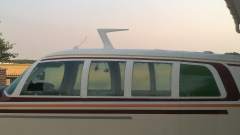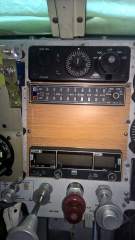-
Posts
340 -
Joined
-
Last visited
About Raymond J1
- Birthday 04/29/1967
Profile Information
-
Gender
Male
-
Location
Near Lille, in France
-
Interests
Aircraft and rotorcraft building, restoration and using.
-
Reg #
F-BOJN
-
Model
M20F
-
Base
LFAQ / LGIO
Recent Profile Visitors
3,608 profile views
Raymond J1's Achievements
-
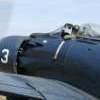
Better yoke mounted PTT - 3D Print
Raymond J1 replied to Twing207's topic in Vintage Mooneys (pre-J models)
J'ai monté sur le bossage central logeant la montre. -
Raymond J1 started following IMG_5561.jpg
-

The 67 F #26, Fox Juliet November.
Images added to a gallery album owned by Raymond J1 in Old MooneySpace.com Images
-

67 F GPS navcom advice please
Raymond J1 replied to Bobaran's topic in Vintage Mooneys (pre-J models)
Là, vous parlez de l'avion tout entier ?... -
Why to close complete the cowl flaps in cruise ? In fact, the complete close cowl flap is for the descent flight... No ? Best new year for all.
-

Are pilots going to be replaced by AI?
Raymond J1 replied to ilovecornfields's topic in Miscellaneous Aviation Talk
80% of accidents are caused by human failure. To replace the human with something else is to modify the occurrences on these 80% of human origin... But the machine is also fallible, so this does not balance the totality of human failures. In an automatic machine, it is therefore necessary to resolve to accept a failure rate of about 20 - 25%, which will not necessarily lead to an accident. -
If my words seemed disrespectful to you, please accept my sincere apologies because I do not intend to leave this impression or even harm. My job is precision mechanics, with several years in aircraft construction, aircraft restoration is also my passion. I have a reputation for being precise and picky, a requirement of my profession which is also my nature. So sometimes this translates in my writings by the use of dedicated terms and the desire to explain what the business rules require, but also the corollary, that is, what tinkered or technically unfounded operations can generate. I am also a private pilot, so I understand the expectations of the pilot who owns an aircraft. Don't blame others for not being constructive if you don't even give a constructive testimony. If you don't understand my words, because of my imperfect translations or my poor command of the language, ask, I can rephrase without problem.
-
I liked for a few seconds the nickname of French AI... Because the US AI says that the Mooney M20 is a high-wing aircraft...
-
I'll take an example... More simply... You are in the situation of a user who has a very developed engine monitoring, you are equipped to follow the constants of its operation. You are a perfectionist and have all this : -Pressures (oil, Map, fuel,...), -Flow rates (oil, air,...), -Temperatures (CHT, OAT, EGT, oil,...), -Speeds (engine/propeller, tubo...), As it is much too expensive, you do not have the vibratory tracking (acoustic) and you preferred a very comfortable ANR headset to hear the radio well... Question : Do you know the influence on the engine parameters that you follow from an exhaust valve that gets stuck or flu in its guide? Do you know what happens when an oil injector under the piston is clogged and no longer sprinkles oil on the said piston bottom to cool it? The two phenomena mentioned above are some of the beginnings of a malfunction of the engine, do you know how to tell if these are effects or if these are the causes of the malfunction? In truth, they are both effects, but most technicians will tell you that they are the cause of something... They do not cause the engine to stop, at worst we notice the destruction of the rocker rods, a loss of power, at best just a buckling of the rocker rods and sometimes a return to normal operation as soon as the oil temperature has dropped again (for example after a sustained climb to altitude and then the passage to cruising level). Because yes, when this happens, parameters vary, first the speed and the vibrations (the acoustics change) and then the temperatures. When a valve erases in its guide, it is after the temperature of the oil increases and again after the CHT changes, what changes first is the speed, consequence of a poor efficiency of the cylinder concerned... So the effects are noticed afterwards... Unless you mistakenly consider that the effects would be causes. But you don't monitor the noise in addition to having a radio headset on your ears and the speed is regulated by the mechanism of your propeller at constant speed... So you will not see and you will not hear the first effects. If you had monitored the acoustics or the vibration of the engine, then you would have had the information of what is happening at the moment when this happens... But it's out of budget. And so on the contrary, when the monitored deviations are noticed, who knows how to build among the user pilots a tree of the causes of failures and above all, at what too late moment are the damages noticed? What I am writing to you has been known for a long time, and the onboard monitoring on board has not revealed the thing, it has been known since the late 30s and discovered with the use by engine manufacturers of complex installations for monitoring engine parameters. It is these errors of considerations between causes and effects and also the late observation of damage that led to preventive maintenance interventions towards the end of the 1940s, i.e. the creation of time stops between TBO to assess and note (instead of imagining) the partial state of a mechanism, what we call in mechanics the reference states. The reference states are clearance or adjustment values that allow the proper operation of the engine, if they change or if they are modified, then the operation of the engine and the performance are impacted. Are not considered as reference state which does not impact the operation of the engine when the state changes. For example, the spacing of the spark plug filaments is a reference state... The degree of timing of the ignition advance is another, the same applies to the valve guide clearances, the rocker arm clearances,... The oil pressure set with the setting of the oil pressure regulator is a reference state... Do not confuse reference state and performance parameter... The engine speed, for example, it is not a reference state, it is just a parameter to check that allows you to see that the engine performance is obtained. So in mechanics, during a certain period of the history, the intelectual construction of a serious maintenance is the preventive method, it consists in ascertaining by factual readings the reference states of the mechanism and possibly carrying out corrective measures to find these states when they are in deviation. The BS of a manufacturer like Lycoming who suggests that you measure the clearance at the valve guides every 400 hours fits into this philosophy. The periodicity of 400 hours is also defined as sufficient... So for your 4 cylinder O 360, every 100 hours you know what you have to do: Control the clearance with the guides of a cylinder. The magnetos at 200 hours and alternately... The candles at 50 o'clock... Preventive maintenance has one cause of failure: The incorrect execution of simple operations with partial disassembly. Because the consequence of a bad reassembly of the partially deposited thing is sometimes worse than the degradation of the reference state that it was desired to correct. And it is this observation that towards the end of the 70s led to monitoring certain reference states, or the effects they generate, in order to avoid serious failures following minor maintenance intervention. This is the creation of "predictive" maintenance, that is, the one that bases the service time between repairs (and not TBO) on the basis of performance records in service. This is another topic, but the procedure of "fluid management" is for example one of the tools of predictive maintenance... On the contrary, you cannot pretend to do predictive maintenance with an oil change at 50 h which is a preventive maintenance solution. Well, it's the same reasoning with someone who explains to you to do monitoring and change his candles every 200 hours... One is not in tune with the other.
-
I don't know if I'm wrong, but I see that the correct modern way to progress would be the one that consists of monitoring an engine to finally notice the damage too late. And this may raise eyebrows among some old-school technicians, connoisseurs of the different aspects of preventive and predictive maintenance, who find it a bit daring to trust a method of predicting problems once they have occurred. Especially since, faced with the modern epic of monitoring, there is an ancient history of preventive and curative maintenance, based on the hourly and calendar expertise of the mechanisms for checking the reference states (clearances, pressures, temperatures, regimes), that is to say the above when there are deviations, the degradation of performance. While monitoring notes a performance degradation when it occurs... And you are working on it to deduce the causes. In mechanics, this is called "working backwards", that is to say starting from the effects to treat them, whereas in the old principle of curative maintenance and more advanced preventive maintenance, the effects are avoided by treating the causes in advance, that is to say before the effects occur.
-
This means that instead of reading nonsense on the internet, I suggest you read SSP 1776 if you have an IO 360 under your engine hood.
-
As you may have read on the internet, at the risk of taking the information for nonsense, it is not with the internet that the time between the overhaul of an engine and the moment when its useful life ceases is decided... Especially if said engine was born a very long time before the Internet. An engine is a technical object, and only the technique is capable of ruling on its state... Nothing else. And the basis of technical discussions, on the Internet or elsewhere, is the table of limits, that is to say SSP 1776 for an IO 360... Example. If you read this document, on the Internet or elsewhere, you will find that the engine manufacturer does not offer to tell you if the engine is worn out or not depending on the age of the pilot, the year of construction, the flight time, and the country in which you are located. In reality, he just asks you to carry out a metrology of the constituent parts of the engine and to verify that each one respects the manufacturing tolerances, that the engine has a total flight time of 500 or 5000 hours. At certain deadlines, there is a systematic replacement of certain components which is advisable or recommended... And as long as the part is dimensionally and structurally compliant, it is not prescribed to replace it, reuse is quite viable and this is how all engine overhaul workshops around the world work. You can see this every day, especially on the "warbirds" engines whose crankcases and mobile crew are sometimes 80 years old and several times the recommended TBO. I know an IO 360 from 1968 that has more than 4000 hours of flight, it still has its original crankcases, its crankshaft and also the original cylinders # 1 & #3. During its second general overhaul, it is ironed in bore "+ 10" (+ 0,010"), without going under the nitriding layer of the cylinders and received new pistons to the same standard. The solution of replacing an old engine with a new one is not a safer or better solution than that of overhauling. It's just sometimes an economical solution and nothing more. But this takes us away from the subject of monitoring, the benefits of which would be demonstrated if the wear effects observed at each TBO were reduced... Which is still not the case.
-
Boris VIAN takes up the definition of pataphysics as it appears in Alfred JARRY's "Gestures and opinions of Doctor Faustroll", specifying that "pataphysics is to metaphysics what metaphysics is to physics". Two of the fundamental principles of pataphysics are the equivalence of opposites and the importance given to the exception rather than the general case. Boris VIAN adds that in the scientific field, it is moreover the anomaly that advances the discovery.
-
Enfin, le meilleur avion composite est celui en métal et bois comme le M20 A...
-
-

Threaded boss in engine case… what’s it for?
Raymond J1 replied to 47U's topic in Vintage Mooneys (pre-J models)
This tapped hole is present on many cranckcases, it measures 1" deep, made to receive a 1/4 x 3/8" screw. Used for fixing the rear cooling baffle by some, it is not used on Mooney.



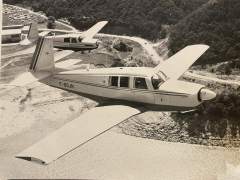
.jpg.bc4cd82d0844deaac9944ea24258b715.jpg)

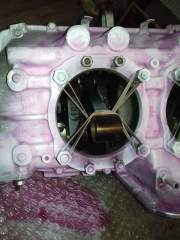
.jpg.a85cd55c55c1d29db7e51503062914e7.jpg)
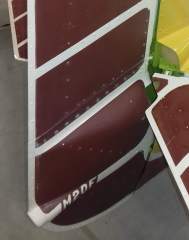
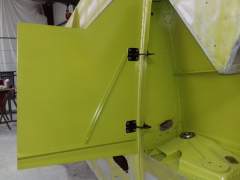
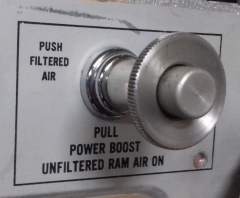
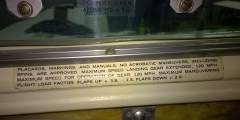

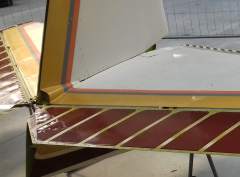
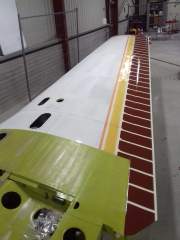
![20220718_163427[1].jpg](https://mooneyspace.com/uploads/monthly_2022_07/small.830764417_20220718_1634271.jpg.5655cb82084979f7206754e7b31145d6.jpg)
.jpg.e72a1b3775c6f39a7327dd7e1d5e7713.jpg)
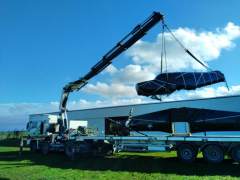
.jpg.8bb3da554737b12f67a69a9bef83a37e.jpg)
